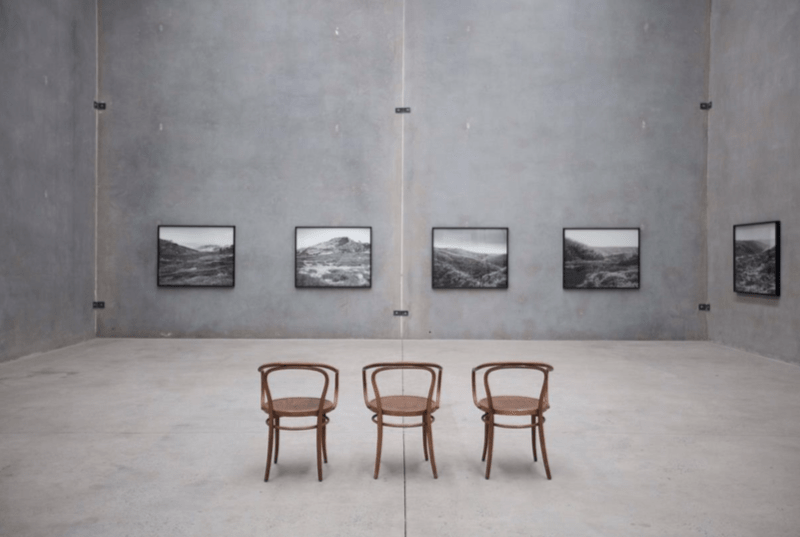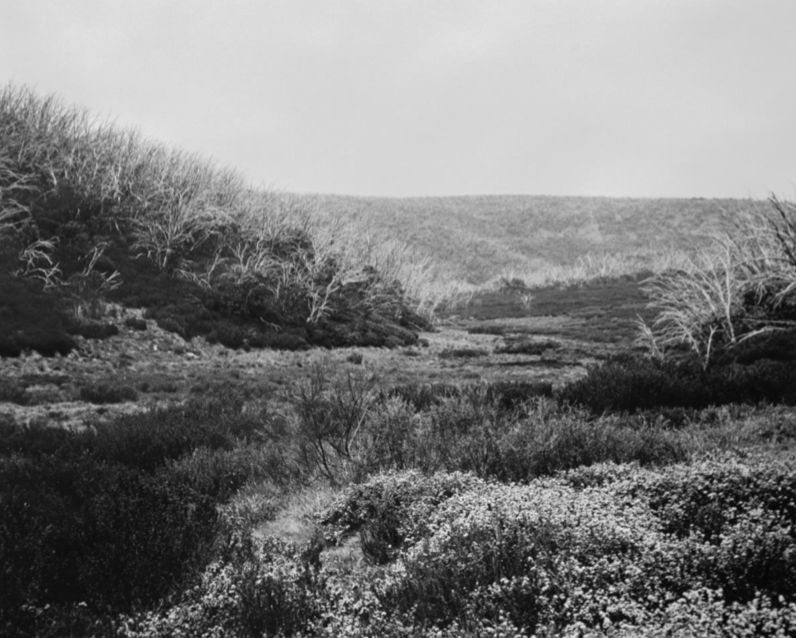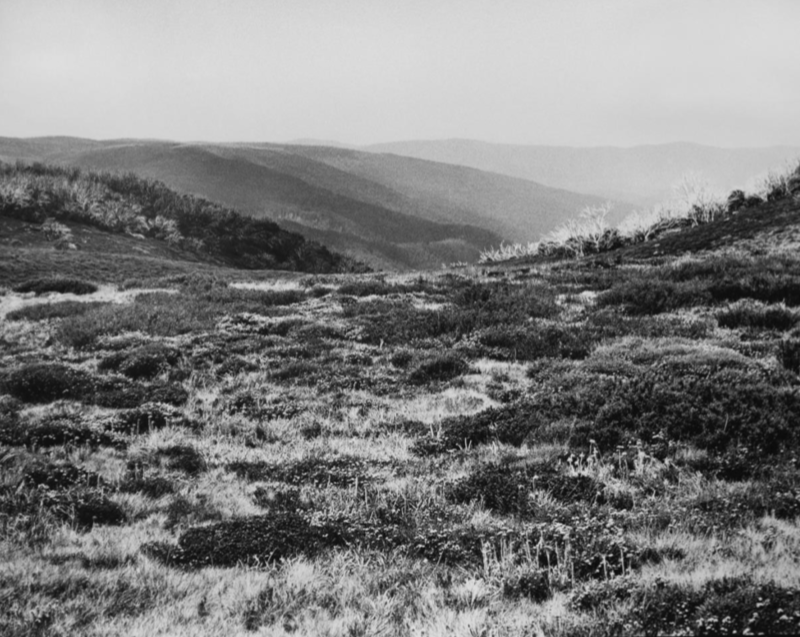


Alpine Bogs and Associated Fens is Amanda Williams’ first solo exhibition with Sydney gallery The Commercial. Its seven-work hang feels to be the culminating gesture of the artist’s recent commitment to hand-printed mural format gelatin silver photographs. Although these immense and antiquated processes are tremendously laborious, Williams achieves a graceful givenness – or perhaps a naturalness – with her making, akin to that of the alpine landscapes imaged. It is as if the vistas made the photographs themselves, in their own likeness, a symbiosis of subject and form that is deeply compelling.
Rather than the result of 1820’s science experiments, Junko Theresa Mikuriya writes in A History of Light that photography is ‘only the material manifestation of that which has always existed’ – namely light, time and chemistry, and particularly the act of summoning or collecting these things as seen dominantly in Western theurgy, metaphysics and magic. Assuming this speculative approach to the history or philosophy of photography, we can begin to think through the terrain common to ecological formations and photosensitivity, having developed somewhat in tandem and been shaped by many of the same elements. Physically and symbolically, Williams returned several times to Australia’s south-eastern high country in the conception of this work, favouring alpine bogs and mineral-rich fens not only for their significance, but for their semblance, ontologically, to photography’s own.
The show’s title recalls the language of a recent biodiversity Act that sought to identify and preserve communities of endangered ecosystems across the country. Fundamental to these ecosystems are Williams’ subjects. The bogs of the title contribute dynamically to our atmosphere. Acting as ‘sinks’, they trap and compress unthinkable amounts of carbon dioxide in partially decayed plant matter. This activity gradually produces peat over thousands of years, a spongy and slow burning renewable energy. Like photographic developer in an analogue darkroom, bogs are highly acidic, and for this reason are frequently described as monuments to death. They preserve generations of life with their contents, a role we know to have long been performed by photography too. Fens are then alkaline, like a chemical stop bath, for those still following the darkroom metaphor. They are once home to an incredibly diverse array of life, before commonly becoming bogs if water sources change. When moss begins to net their surface, a fen’s hospitality is irrevocably altered. Light, time and chemistry are again the forces of this seemingly photographic transformation and like hands-on image processing, these quagmires are approaching obsolescence, forgotten and destroyed by contemporary industry.
In an era accustomed to the alarm clock ring of ecological demise, there is something newly unsettling about the deliberate quiet of these photographs. The artist says that there are no ‘tricks’ to this series (expired photosensitive materials or exhausted chemistry), as can be found in her previous bodies of work, thus declaring the camera a frank witness to the world in view. Notably, this view does not include the flames that ravaged the Australian landscape during the latter months of 2019, while the work was being made.
And yet, it is not that Williams avoided the bushfires and their all too sobering statistics, so much as she has taken up their broader representation with nuance. The overwhelming economy of images that emerged from the catastrophe served to both bombard and desensitise its often-distanced audience who swiped and gawked, then framed the amaranth sun between gnarled branches and like Aesop, doted over its bloom. Devoid of this colour and overt menace, Williams’ exhibition breaks away from the spectacularity of our image culture to inspire reverence, and hopefully action, for sites and practices teetering on the brink of destruction. The dramatic scale of the prints makes observable their condition of having been painstakingly, carefully made, an affordance nearer to that of charcoal drawing. We are slowed by this. Rather than swiping and gawking, we pause and lean in to notice the topography’s vegetal folds and recesses, where light once dazzled the artist’s negative. Informed exclusively by this light, time and chemistry alone, the exhibited works make use of that which photography always purported to be. That is, the pencil of nature.
The artist and gallery pay our respects to the traditional owners of the alpine lands on which these photographs were taken. We acknowledge that they are more than one people and that understanding of the territories of traditional custodianship of these areas is currently under reconsideration between a number of Aboriginal peoples of different language groups whose deep historic connection to country has been displaced and obscured by colonial occupation. Much positive work is currently being done in this area. We pledge a donation from sales of works in the exhibition to Firesticks Alliance, an Indigenous-led network whose aim is to reinvigorate the use of cultural burning by facilitating learning pathways to fire and land management in Australia. – The Commercial, Sydney
Benjamin Clay is an arts writer and worker living on Gadigal land. Benjamin is particularly interested in expanded photographic practice and the degree to which its avant-garde is backward glancing.
